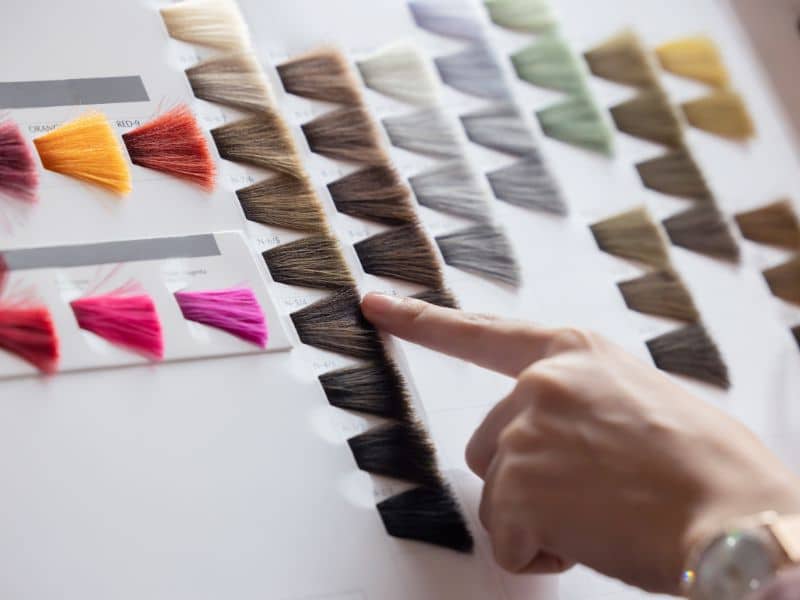Do you ever find yourself wondering what colors to mix together for a specific hair color?
Are you lusting after a shade that’s not quite brown and not quite blonde? Do you fancy purple hair with more of a red undertone? Sounds like you need to learn all about the hair color mixing chart.
In this blog post, we’ll explain all about color mixing, how to mix hair color and the ratios of each shade needed to create your desired look.
We even provide a color mixing calculator so you can work out the amounts you need of each one.
Hair color combining is a fun and creative process that can also be very confusing.
Don’t worry – we’ve got this covered. Our guide will take away any confusion or stress about making up your own custom color.
We’re going to show you the basics of mixing hair color so you can achieve the perfect hue for you. Let’s begin!
Table of Contents
- Hair color mixing calculator.
- Mixing Hair Color Shades.
- Choosing Complementary Colors.
- TOP TIP!
- Can you mix cool and warm hair color?
- Color Theory: The Hair Color Wheel.
- What is a hair color mixing chart?
- Can you mix two box dyes together at home?
- Blending Your Colors.
- Watch and learn: How to mix hair dye colors.
- Professional Formulas for Popular Hair Color Combinations.
- Can you mix levels of hair color?
- Tips for Blending Multiple Colors.
- Doing a Strand Test Before Coloring Your Hair.
- Parting words.
Hair color mixing calculator.
Need help working out your color/developer amounts by ratio and exactly how much you need? Just use our hair color ratio calculator!
Enter the ratio and hair color or developer volume you already know and let the calculator fill in the blanks. Its easy!
Hair Color Ratio Calculator
| Ratio | Volume(oz) | |||||
|
|
: |
|
= |
|
: |
|
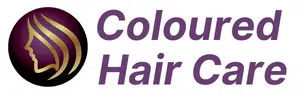
Mixing Hair Color Shades.
Mixing more than one hair color shades together is a sure-fire way to get a more natural look.
Off the shelf box dyes are fabulous for topping up your color but with one problem – the color on the box is the color you’ll get.
And that might be ok.
But if you want a touch lighter, or darker, cooler or warmer, pinker or purplier, that’s when you’ll need to add in another color.
If you think about it, when you get your hair colored at a salon, your hair colorist will take into account things like your skin tone, your natural hair color, your undertones and even your eye color.
As well as the cut and condition of your hair and if your hair has been colored or bleached before.
They use all of this info to make the perfect blend of colors just for you. It’s an art!
“Almost every color I do requires mixing at least two colors. You do this to get the benefit of both colors. For example you may use one color to cover gray but by itself leaves the hair with too much of a warm tone so you will add an ash tone to counter the warmth.”
Mickie Thomas, Cosmetologist for 35years, hair color specialist.
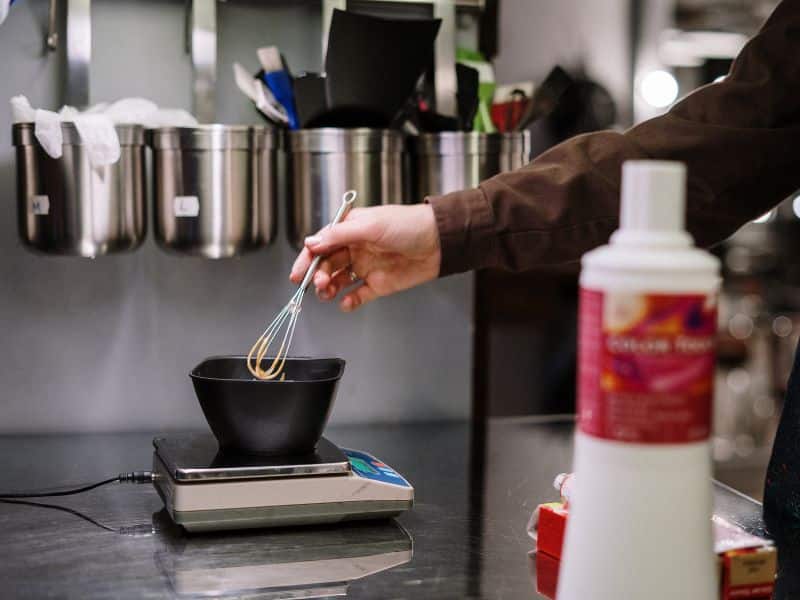
Choosing Complementary Colors.
Now we get down to what hair colour shades go together. This is where the science comes in.
You want to choose colors that complement each other right? It’s easy. Follow the steps below:
Start off by choosing your primary color.
This is the base shade you’d most like your hair to be. It should be as close as possible to the color you’d really like.
So if you want to be light ash brown, your primary color would be ash brown. If you want to be strawberry blonde, your base color would be blonde. You get the idea!
Next, you choose your secondary color.
This is the color that will add another dimension or hue to your primary color.
It can be a darker or lighter shade of your primary color. It can cool it down or warm it up. Or it can add a subtle color to accentuate the primary tones.
Don’t forget your current color when picking your primaries and secondaries. If you’re starting dark, you’ll need lighter shades.
If you’re light already, stay with lighter tones. Work with your base for the best outcome.
TOP TIP!
Make sure the colors you blend together are from the same cool or warm color family.
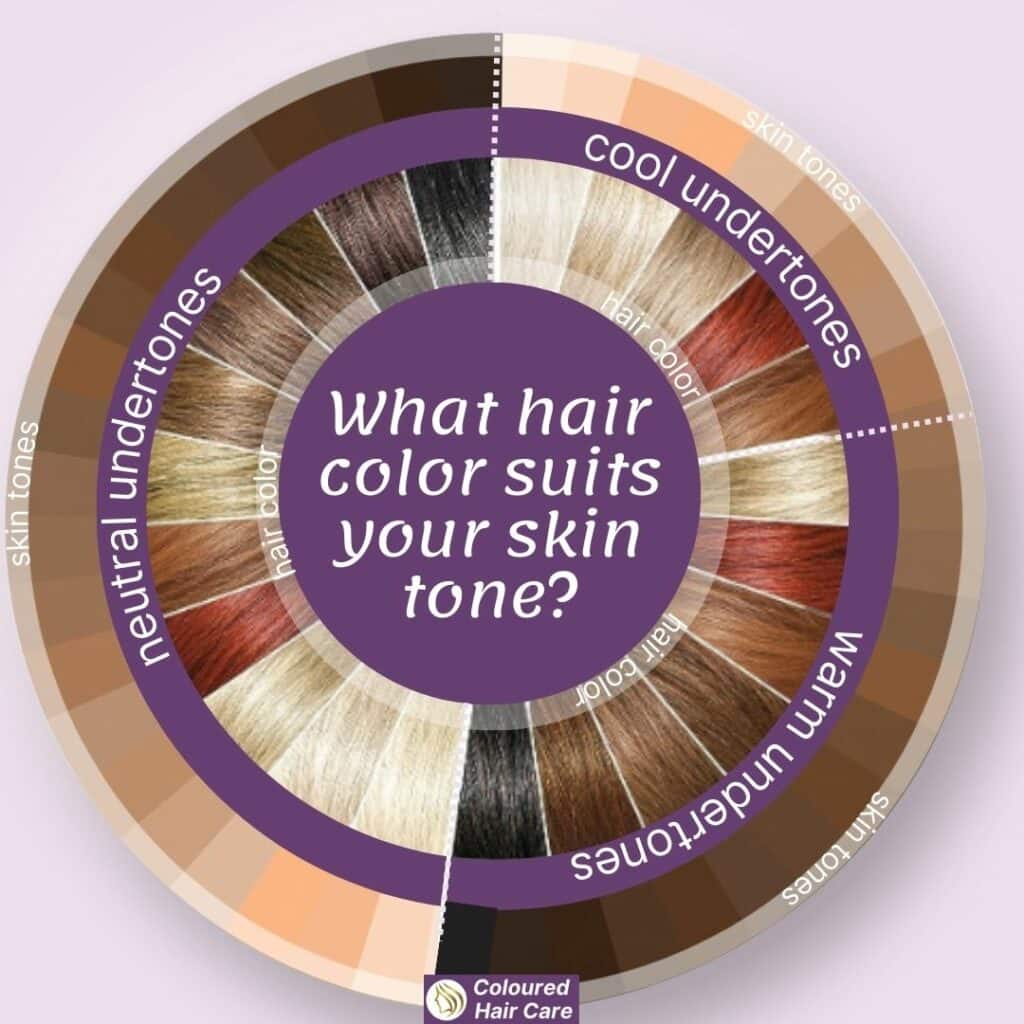
Can you mix cool and warm hair color?
Cool colors like ash won’t mix well with warm colors. They’ll just cancel each other out and you’ll end up with a head full of meh.
It’s all to do with color theory and the hair color wheel.
The hair color wheel shows us what colors neutralize each other and which compliment each other and work well together.
For instance, warm red and orange tones can be color corrected with ashy purple and blue tones as they are opposite one another on the hair color wheel.
Color Theory: The Hair Color Wheel.
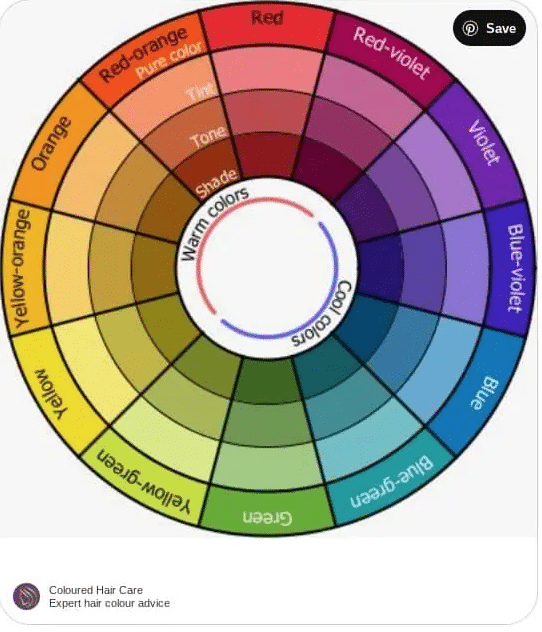
What is a hair color mixing chart?
A hair color mixing ratio chart is a guide that shows you the perfect proportion of colors to mix together to create a certain shade.
Mixing ratios can be tricky to get right, so a hair colors chart or hair color scale takes the guesswork out of it.
Plus, it can be really helpful to have a visual guide when you’re trying to achieve a specific look.
Here’s what a good mixing chart includes:
- Natural Hair Levels – This handy hair level chart shows all the natural shades from black (level 1) to lightest blonde (level 10). High lift levels go lighter than 10 for icy platinum blonde.
- Primary Colors – Red, blue, and yellow are the core pigments. You can’t mix other colors to get these primaries.
- Secondary Colors – Equal parts primary colors make orange, green, and violet.
- Tertiary Colors – Mix a primary and secondary to get fun shades like red-orange, blue-purple, and more.
- Mixing Ratios – The ratios show how much of each color to blend. This gets you the exact hue you want.
- Swatches – No chart is complete without real hair samples dyed in the mixes. See the true color.
- Notes – Pros add reminders like timing, tone changes, and application tips.
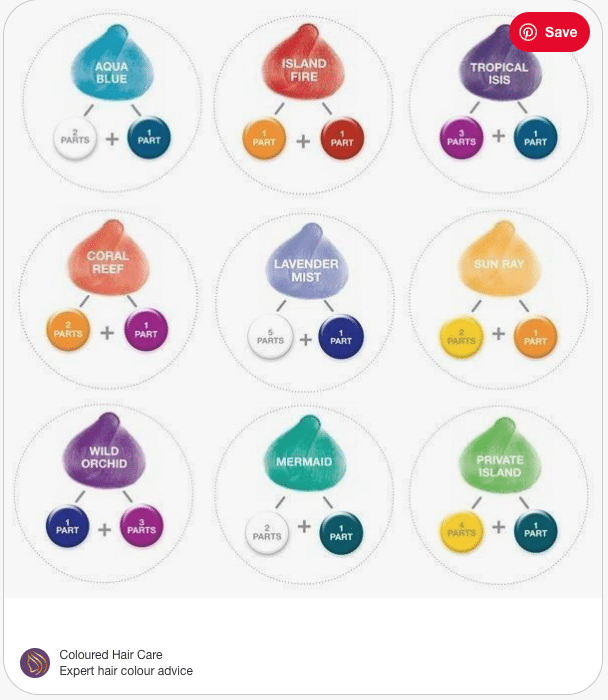
Can you mix two box dyes together at home?
Yes, you can. In fact, there are so many on-trend hair colors that can be achieved at home by combining two box dyes together.
Simply pick one box of your chosen primary color and one box of your chosen secondary color.
Always pick two hair dyes from the same brand.
And get either both semi-permanent hair dye or both permanent hair dye too.
Make up the separate hair colour formulas as per the hair dye instructions using the developer and dye.
Be careful when measuring the formula out. Don’t forget to use our hair color mixing calculator above.
The ratio of the color and developer is really important. That’s why it’s best to get two of the same brand. Then get mixing!
“As long as you use the same brand you can mix box hair dyes. Adding a rich red to a brown for example, would be very pretty. Again, USE THE SAME BRAND as you do not know the tonal qualities of different brands, and may get a muddy result.”
Ing Sev, Salon Owner,colorist at Creative Hair Design
Blending Your Colors.
Combining hair color is as simple as grabbing your chosen colors and stirring them around together – a bit like paint. OK, there’s a bit more to it than that!
- If you want the primary color to be really strong, mix 3/4 of the primary hair color with 1/4 of the secondary color.
- If you want a perfect balance of the two, you can blend 1/2 primary color and 1/2 secondary color.
It’s best to blend the colors in a hair dye bowl, just like a professional. DO NOT try and mix them together on your hair.
There’s a bit of a risk involved as you won’t be able to see the resulting color until it’s on your head.
That’s why we advise ALWAYS do a strand test beforehand to check what color potion you’ve made.
But if you can relax with your color turning a little lighter, darker, ashier or warmer than you’d really like, you can have some fun experimenting!
Expert Insights
“If you have a lot of gray hair, use more of your primary color to get good coverage. If your ratio of gray hair is less, you can use less of it. The amount of your secondary color will affect the overall look you want and how much you want this to show. It’s all about finding the right mix for your hair.”
Enza Piazza, Hair Stylist & Color Consultant
Watch and learn: How to mix hair dye colors.
Here’s a great video tutorial that shows you step-by-step how to mix hair dye to create the perfect hue.
Professional Formulas for Popular Hair Color Combinations.
Get salon-worthy hair color results at home with these pro-approved formulas for beautiful, dimensional shades.
We asked experienced stylists for their expert recipes to recreate 5 gorgeous and on-trend hair colors.
These mixes use professional permanent dyes, but you can adapt them with drugstore box dyes using similar shade names.
Follow the step-by-step mixing guidelines and you’ll get stunning, multi-tonal color – no appointment needed.
Mushroom Brown
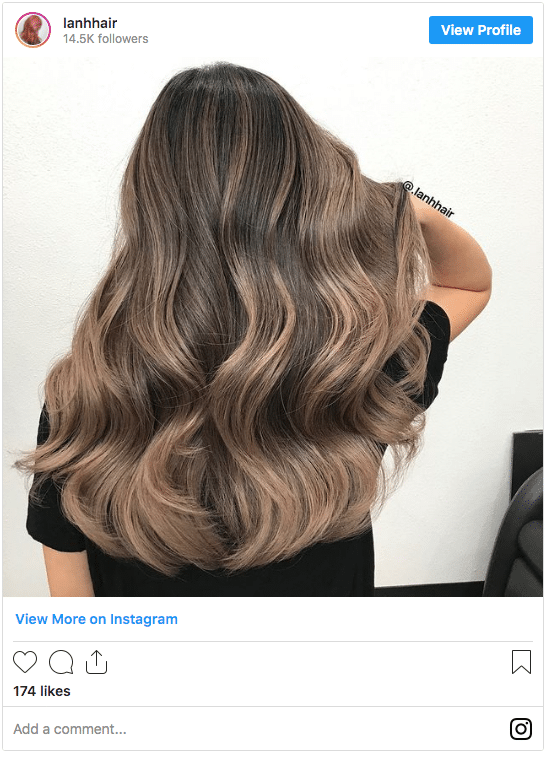
Mix together:
1/2 Ash brown and 1/2 Natural brown on a blonde hair or medium brown base.
Mahogany red
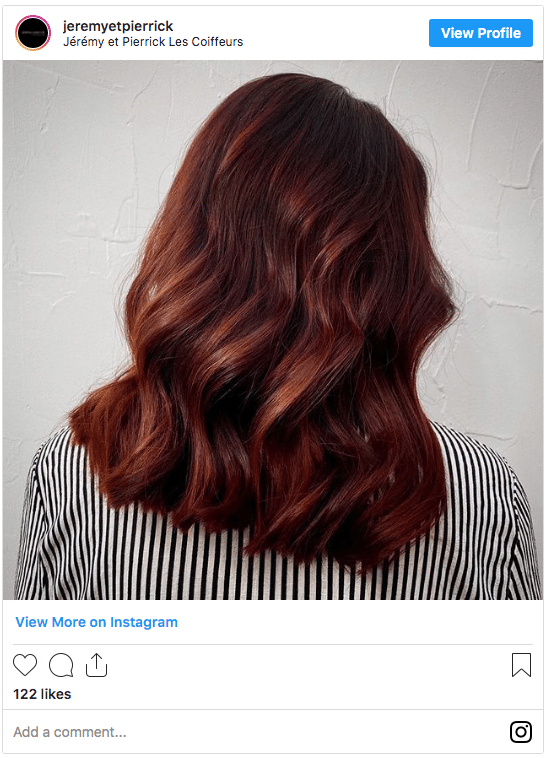
Mix together:
3/4 chocolate brown and 1/4 rich red on a dark hair or brunette base
Strawberry blonde

Mix together:
3/4 Honey blonde and 1/4 light auburn on a blonde base
Midnight blue
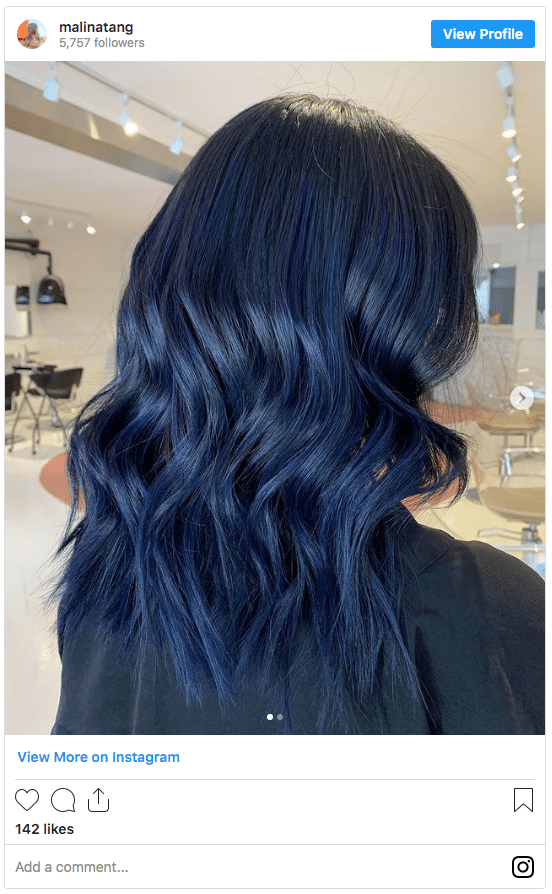
Mix together:
3/4 Electric blue and 1/4 deep black on a medium to dark base
Chocolate cherry brown
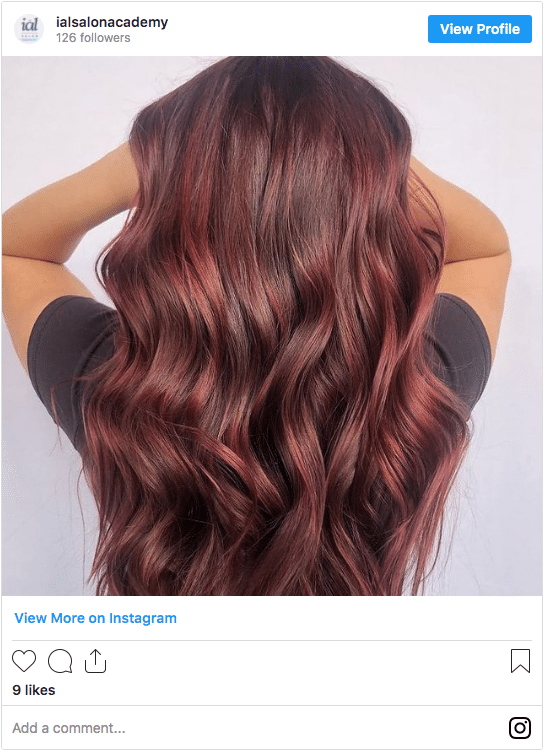
Mix together:
1/2 Chocolate brown and 1/2 cherry red on a dark-haired base.
Can you mix levels of hair color?
Yes you can! What happens is that quite often, you’ll want your hair to be a shade in between two different levels of color, or you’ll want to blend in grays with a specific shade.
So mixing from the levels above and below make sense.
Don’t try to go up or down any more than 1 or 2 levels than this as it’s unlikely you’ll get a good result. Color can’t lighten color.
Here’s a useful hair level chart that will help.
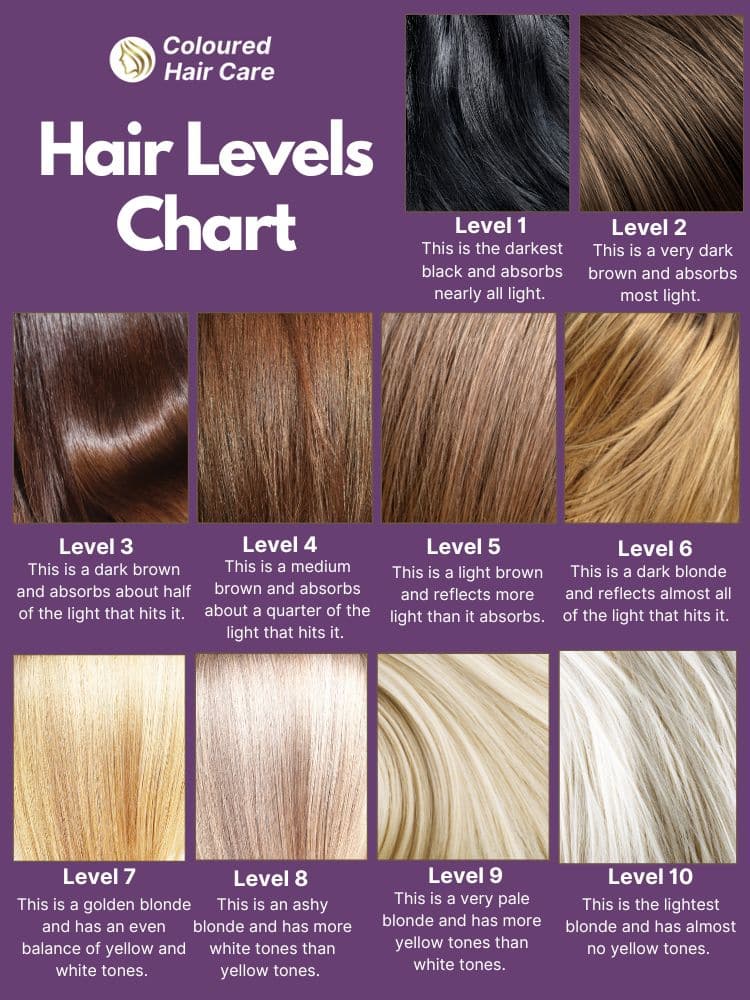
Tips for Blending Multiple Colors.
Dyeing your hair by fusing multiple colors is a talent that’s really best left to the professionals.
You might do this if you want a shade that’s a blend of two levels, but you also want to counteract some undertones by making it warmer or cooler.
Adding hints of red or gold are common ways to tone and tune up hair colors.
But it’s a complex process to get right if you don’t work in a salon.
Two tone hair color is also a job best left to a colorist. Check out our two tone hair color ideas for inspiration!
Doing a Strand Test Before Coloring Your Hair.
We can’t emphasize this enough – always do a strand test before coloring your whole head.
This will give you a sneak peek at the color you’ll get from mixing shades.
You don’t want to end up with a shade you hate right? A strand test is a quick and easy way to preview your color formula.
Here’s how to do it:
- Pick a section of hair near your face and divide it into two or three smaller strands. Choose strands with different textures or thicknesses for the most accurate test.
- Mix up a small amount of your color blend, following the ratio you want to try. Apply the mixed color to one strand at a time, coating each one thoroughly.
- Wrap the strands in foil and wait the recommended processing time listed on the dye boxes.
- Rinse and dry the strands. Now you can preview how the color turned out on different parts of your hair before committing.
- If you’re happy with the strand test, go ahead and apply the color all over. If not, tweak the formula until you get the perfect shade.
This little test takes five minutes but can save you from a big color mishap. Never skip it when trying custom color combinations for the first time!
Parting words.
So now you know how to use a hair color chart to mix hair colors.
Use it wisely! It can take a few tries to get the hang of mixing the right colors.
But once you’ve found your inner alchemist, there’s no stopping you!
Every hue, shade and tone of hair color ever will be at your fingertips (and hair roots!) with our top tips.
With the help of a comprehensive hair color mixing chart, you can safely and successfully blend shades for beautiful, dimensional hair color.
What are you waiting for?
Getting the right mix is all about finding that perfect balance that suits your hair. And if you find this tip helpful, don’t forget to share it on social media. You can find us on Facebook and Instagram @colouredhaircare. Let’s spread the word about fabulous hair color!
